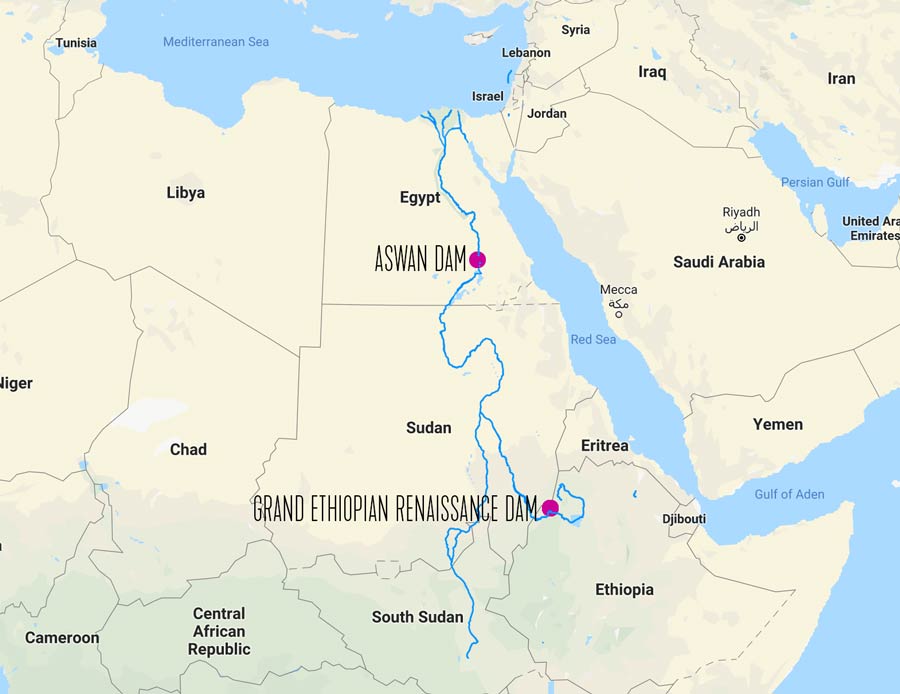The Grand Ethiopian Renaissance Dam in Ethiopia is nearing completion. Egypt wants a say in how quickly the dam fills and how much is released and when.
It is easy to see why Egypt would want that control. Egypt has a dam of its own. The Aswan Dam in Egypt, completed in 1970, enables Egypt to even out the water that reaches the land in the Nile Delta. But the Nile in Egypt is downstream, so it doesn’t matter how efficiently the Aswan Dam is managed if not enough water reaches it.
In a word, if Ethiopia holds back on the water it allows down the Nile, It will damage Egypt’s fortunes.
Ethiopia has accused Egypt of hydrological colonialism for trying to control how Ethiopia manages the flow from its new dam.
Egypt says that water that flows through more than one country is an international resource. As such, it must be governed by all the concerned parties.
Electricity
As well as controlling water for agriculture, the turbines powered by the dam’s water outflow will provide electrical power for Ethiopia.
And Ethiopia plans to sell the excess electricity generated to neighbouring countries. The power lines are already going in.
But it is not just Ethiopia, Egypt and water. There may be another player in the game.
Who Financed The Grand Ethiopian Renaissance Dam
Ethiopia funded the dam by issuing bonds to nationals in Ethiopia and Ethiopians abroad. It said is was forced to take that route because Egypt pressured international funders to refuse to back the project.
What is not clear is who financed the turbines. The turbines are a big part of the project and the most technical. They are Chinese built, but who paid for them? China?
There’s a statement in Wikpedia, but no source given:
“the turbines and associated electrical equipment of the hydropower plants costing about US$1.8 billion are reportedly financed by Chinese banks“.
If that statement is true, then it’s perhaps another example of external finance leading to control when the debtor country cannot repay the debt.
China has been accused of it before. And it is, of course, not the only country accused of that.
So maybe it is a race that Ethiopia has to run. It has to increase agricultural production. It has to encourage new projects within the country that consume that electricity. And it has to make money from selling electricity to neighbouring countries.
And to do so while keeping up payments for the turbines.
Last week, Ethiopian Prime Minister Abiy Ahmed was awarded the Nobel Peace Prize.
